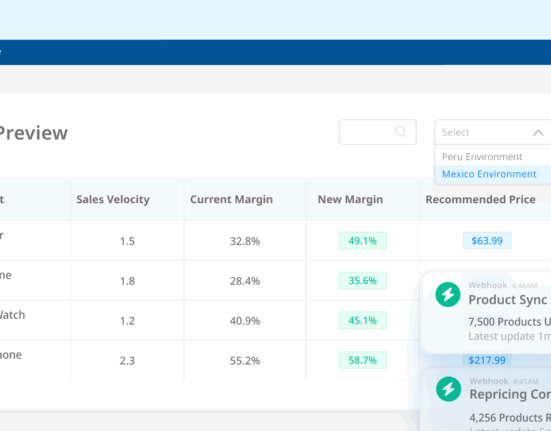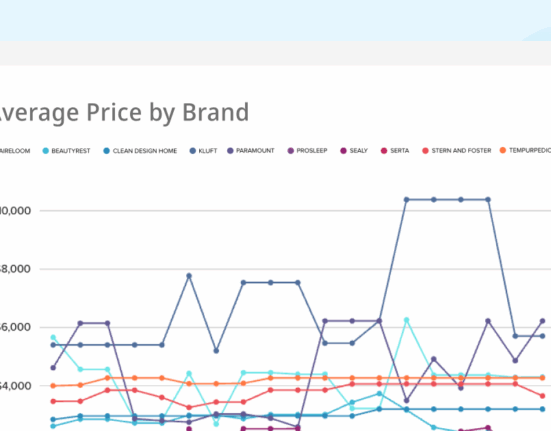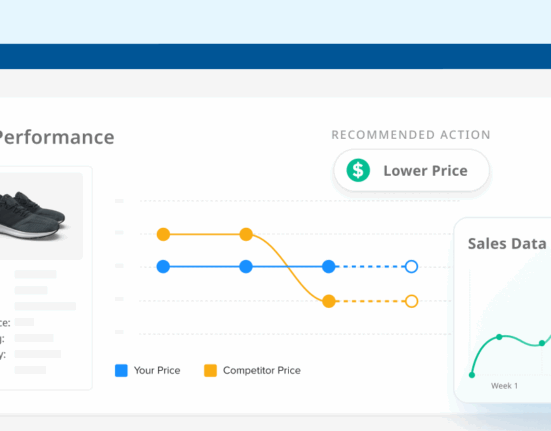One of the most critical aspects that can determine the success of a product or service is its pricing model.
A well-thought-out pricing strategy not only ensures profitability but also aids in positioning the product effectively in a competitive market. It should reflect the benefits that your product or service offers, without compromising on your bottom line.
However, creating a sustainable pricing model can be a complex task. It involves a careful analysis of your costs, a thorough understanding of your customer base, and a keen awareness of your market competition. It’s about striking a balance where your prices are competitive yet profitable, and where your customers see the value in what you’re offering.
The goal of a sustainable pricing model is to find a happy medium that has optimized pricing strategies and maximizes both customer satisfaction and company profitability. Once you get it right, this pricing model can be a game-changer for your business.
Factors to Consider When Building a Pricing Model
When it comes to building a pricing model, there are several key factors to consider:
- Costs: This is where it all starts. Consider fixed costs (like rent or salaries), variable production costs (like materials), and brand generation costs (marketing). It’s not just about making sure these are covered, but also about making a profit.
- Market Demand: Understanding what your customers are willing to pay is crucial. This can be assessed through market research or by looking at your competitors’ pricing.
- Competitor Pricing: Speaking of competitors, their pricing strategies can help you position yourself in the market. You don’t want to price too high or too low in comparison.
- Value Proposition: If your product or service offers unique benefits or value, you may be able to price higher.
- Business Goals: Do you want to penetrate the market quickly with lower prices, or are you aiming for a more premium positioning? Your pricing can help achieve these strategic goals.
Remember, your pricing model isn’t set in stone, it can change as these factors change.

Steps to Building a Sustainable Pricing Model
A well-designed and sustainable pricing model is crucial for the success and growth of your business. Fortunately, it doesn’t have to be overly complicated. There are a few essential steps you can take in order to develop a pricing model that not only aligns with your business goals but also ensures long-term profitability.
No. 1: Analyzing Your Costs
First things first, it’s time to grab that calculator and start crunching some numbers. Analyzing your costs is the initial step in creating a sustainable pricing model. Here, you’ll need to account for all your business’s expenses—both direct and indirect.
Direct costs are typically those that can be traced back to the production of a product or service, like raw materials or labor. Indirect costs, on the other hand, include overhead expenses such as rent and utilities for example.
Understanding your total costs is crucial in determining how to price your products or services to cover these costs and, importantly, to generate a profit.
No. 2: Understanding Customers Perceived Value
After you’ve got a clear picture of your costs, it’s time to shift the spotlight to your customers. Specifically, you need to understand the perceived value your product or service holds for them.
Perceived value is what a customer believes your product or service is worth compared to its actual price. This can be influenced by many factors such as quality, brand reputation, customer service, and even emotional attachment.
Try to put yourself in your customers’ shoes and think about what they value most about your product or service. Is it the superior quality? Or maybe it’s the exceptional customer service you provide? Understanding your customers’ perceived value will help you set sustainable pricing strategies that match their expectations and maximize your profits.
The ultimate goal of a sustainable pricing model is to ensure that the business remains profitable while delivering value to its customers.
No. 3: Researching Competitor Pricing
The next step is to look into what the competition is doing. This doesn’t mean you should be copying anyone else’s pricing, but understanding what your competitors charge for similar products or services gives you a benchmark to compare your pricing against. It helps you gauge where your business stands in the market.
Are you pricing too high, perhaps driving shoppers to the competition? Maybe you’re pricing too low, leaving money on the table?
Keep in mind that while it’s important to remain competitive, you also need to ensure you’re making a reasonable profit. So, take the time to do some market research, examine your competitors’ prices, and use that information to inform your pricing strategy.
No. 4: Evaluating Market Conditions
Another important step when crafting a sustainable pricing model is to evaluate the current market conditions. These conditions can greatly influence your pricing strategy.
Are you operating in a saturated market where competition is stiff? Or maybe it’s an emerging market with lots of opportunities for growth? What about the economy—is it booming, stable, or in a downturn?
These factors can dictate how much consumers are willing to pay for your product or service. For instance, in a booming economy, consumers might be willing to pay a premium for high-quality goods or services. Conversely, during a recession, price sensitivity tends to increase, and discounts or value options might be more appealing.
By understanding the market conditions, you can adjust your sales and pricing model to align with the current economic climate and consumer behaviors, ensuring your pricing remains competitive and profitable, regardless of market fluctuations.
No. 5: Setting Your Price
Pricing is a dynamic process that requires regular reviews and adjustments. Aim for a price that covers your costs, matches your customers’ perceived value, stands up against the competition, and aligns with the market conditions.
It’s a delicate balance, but with careful planning and ongoing evaluation, you can set a sustainable price that supports the growth and profitability of your business.

Maintaining a Sustainable Pricing Model
Maintaining a sustainable pricing model is key to a company’s longevity and success. It’s not just about setting the price right for now, but also about ensuring that the price can be adjusted to meet future changes and remain optimized even during market or customer fluctuations.
On the one hand, you want to offer competitive pricing to attract and retain customers. On the other hand, you need to ensure that the price covers costs and generates a reasonable profit.
So, how can this be achieved? By constantly reviewing and adjusting pricing strategies, and by keeping a close eye on market trends, costs, and customer behavior. A sustainable pricing model is always evolving, just like business.
Building a Pricing Model for Long-term Success
A sustainable pricing model not only ensures profitability but also helps in maintaining a competitive edge through market changes. There are a few things you need to keep in mind if you want to sustain a successful pricing strategy.
Firstly, understanding costs at a granular level is crucial. It helps in determining the lowest price at which a product or service can be sold without incurring losses. Secondly, the value perception of the customer plays a significant role. Pricing should reflect the value that customers associate with your product or service.
Thirdly, competitor pricing and market trends should be taken into account. A pricing model must be flexible and dynamic, enabling the business to respond to changes in the market promptly and adjust pricing as needed. Lastly, companies should remember that pricing is a strategic tool. It can be used not only for-profit maximization but also for market penetration, brand positioning, and customer retention.
Keep in mind that the ultimate goal of a sustainable pricing model is to ensure that the business remains profitable while delivering value to its customers. Striking the right balance between these two aspects is key to sustainable pricing management and development, and while it may be challenging, the rewards are undoubtedly worth the effort. Stick with the process, and over time, you’ll find the sweet spot that aligns your business objectives with customer satisfaction.
Visit Wiser.com today to learn more about how to optimize your pricing.









